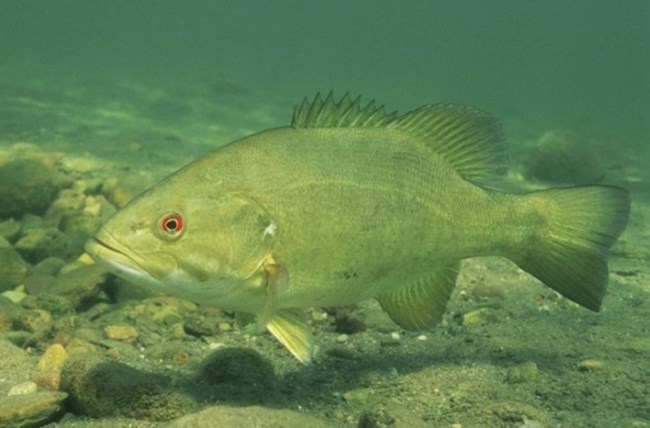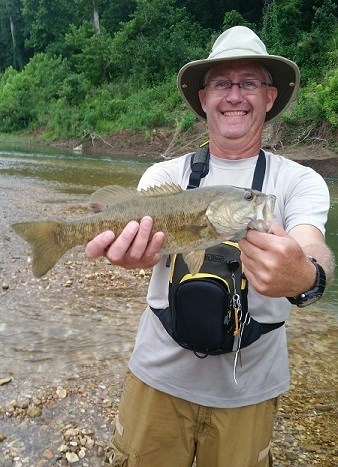Part of a series of articles titled Buffalo National River Science Spotlights.
Article
Smallmouth Bass Abundance and Climate Change

D. Magoulick
Buffalo National River is home to at least 59 species of fish, including the smallmouth bass. Prized by anglers for their ruthless fight on a fishing line, smallmouth thrive in cool, clear Ozark streams with woody debris and boulders for habitat. The Buffalo River is near the southernmost edge of this species’ range.
Research suggests that climate change will likely affect the abundance of smallmouth bass in the Buffalo River. With the southern United States projected to warm by 5 to 7 degrees Fahrenheit by 2050, the suitable habitat range for smallmouth bass could shift and/or shrink as a result, causing population decline at the Buffalo River. Conversely, certain effects of climate change—like reduced flooding—could boost their population at the Buffalo.

NPS/L. Stoops
In 2018, biologists from the University of Arkansas and Arkansas Game and Fish Commission studied how climate change and angler harvest may affect future smallmouth bass in the Buffalo River. Using population, temperature, and water flow data collected by the Arkansas Game and Fish Commission and the National Weather Service from 1992-2012, the biologists created a model that can forecast smallmouth bass population based on environmental conditions.
Research shows that angler harvest, flood events, and drought can cause smallmouth populations to decline, with drought causing the most harm. According to the biologists’ model, warmer spring temperatures and decreased rainfall could reduce flooding and increase the population of smallmouth bass by about 8%. However, increased spring flooding or a severe summer drought could reduce the number of smallmouth by 50% or more. The outcome depends on how the climate shifts in Northwest Arkansas.
As rising global temperatures are associated with widespread changes in weather patterns, it is predicted that more extreme weather events like floods and droughts could occur. Using science to inform fisheries and wildlife management, including harvesting regulations and restrictions, will be crucial in protecting native species as the climate shifts.
Last updated: December 2, 2020
